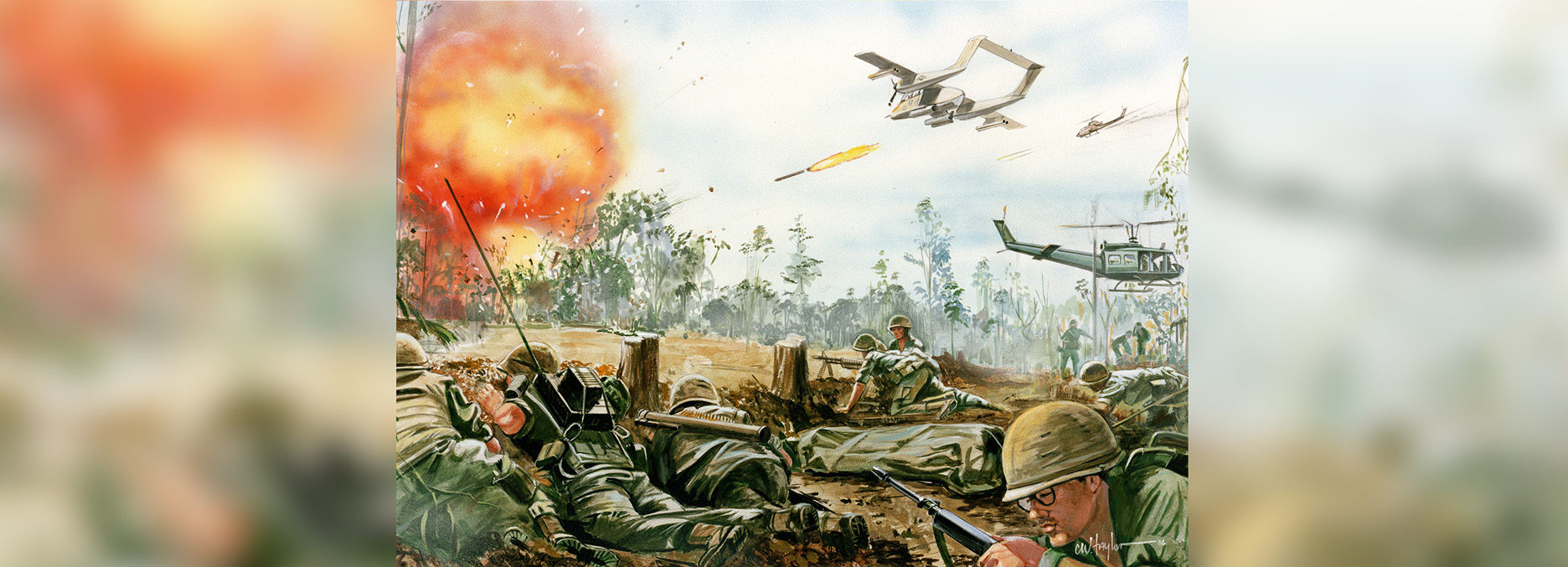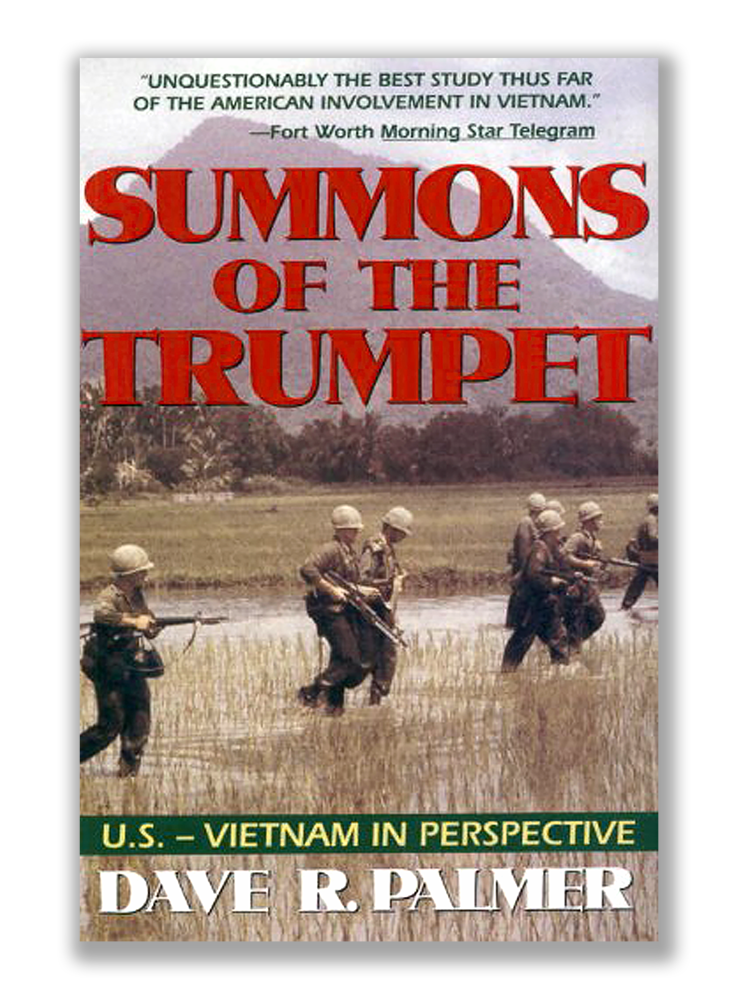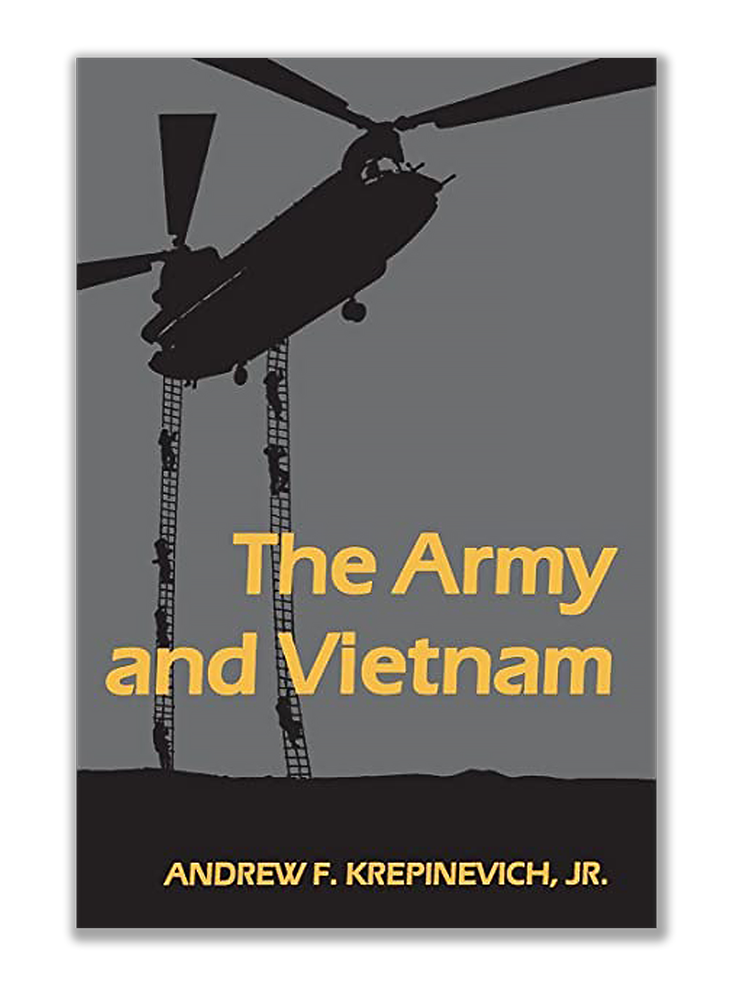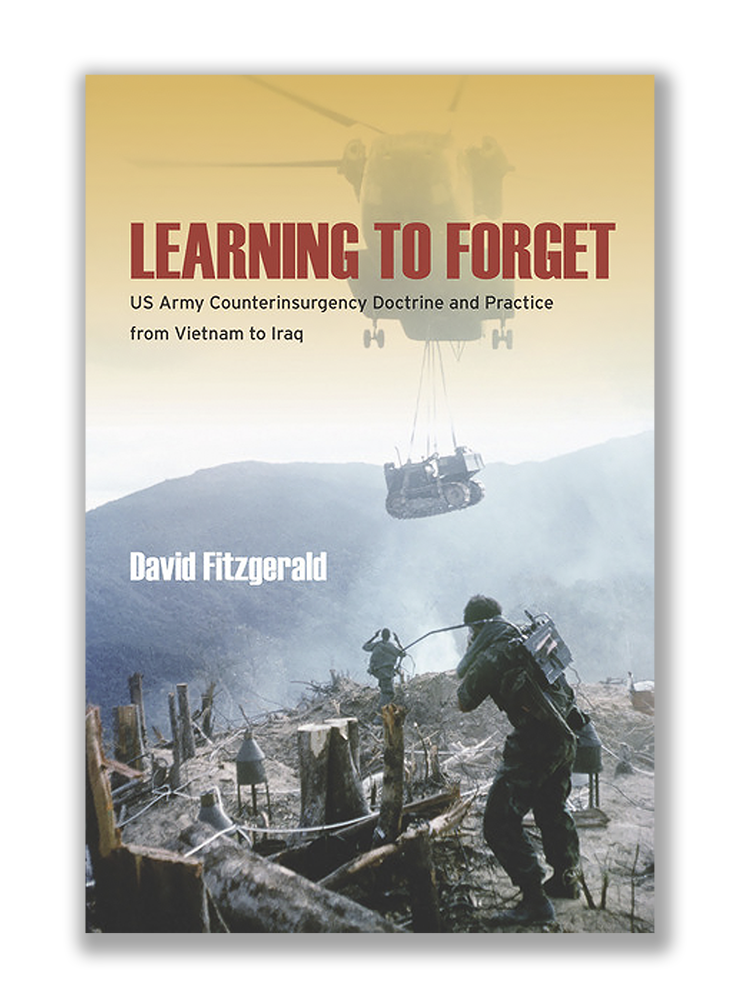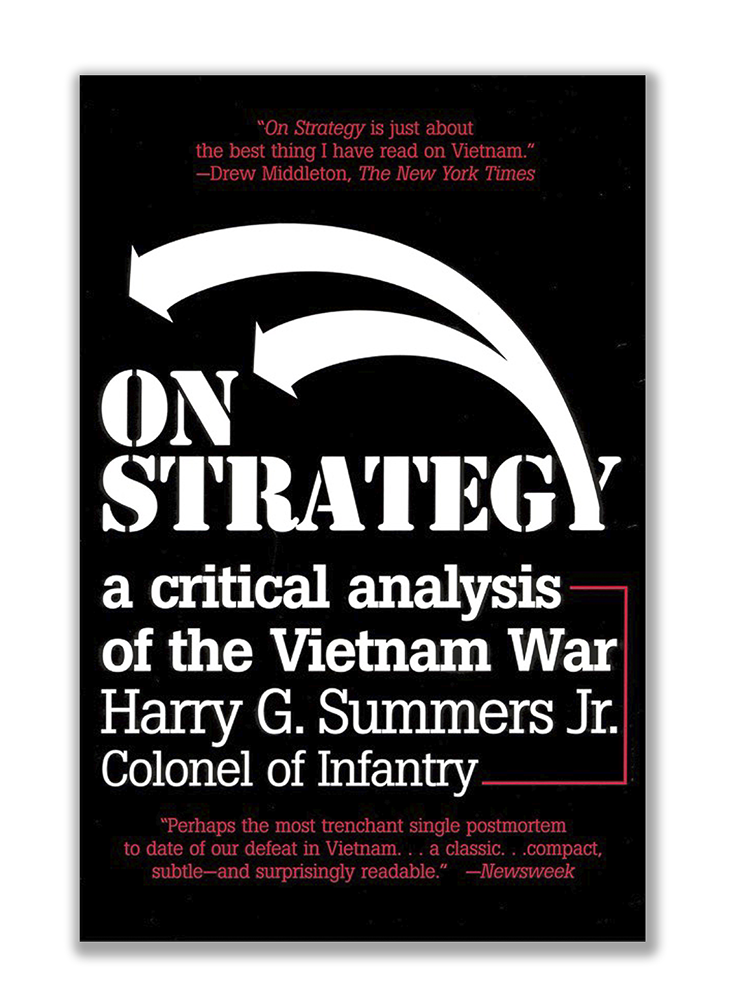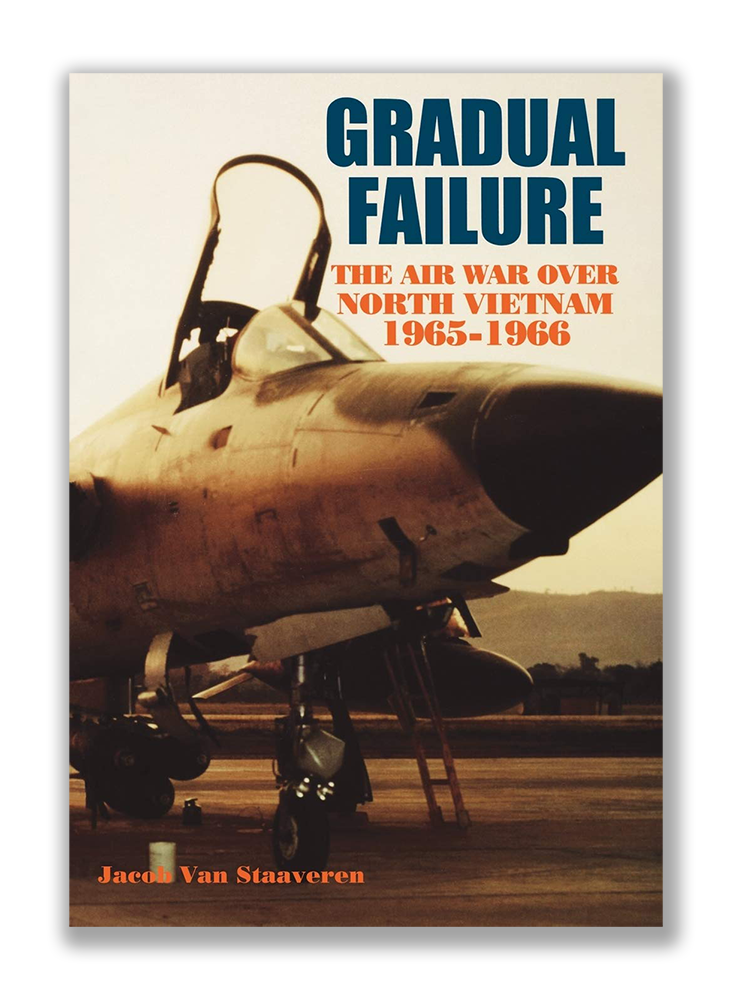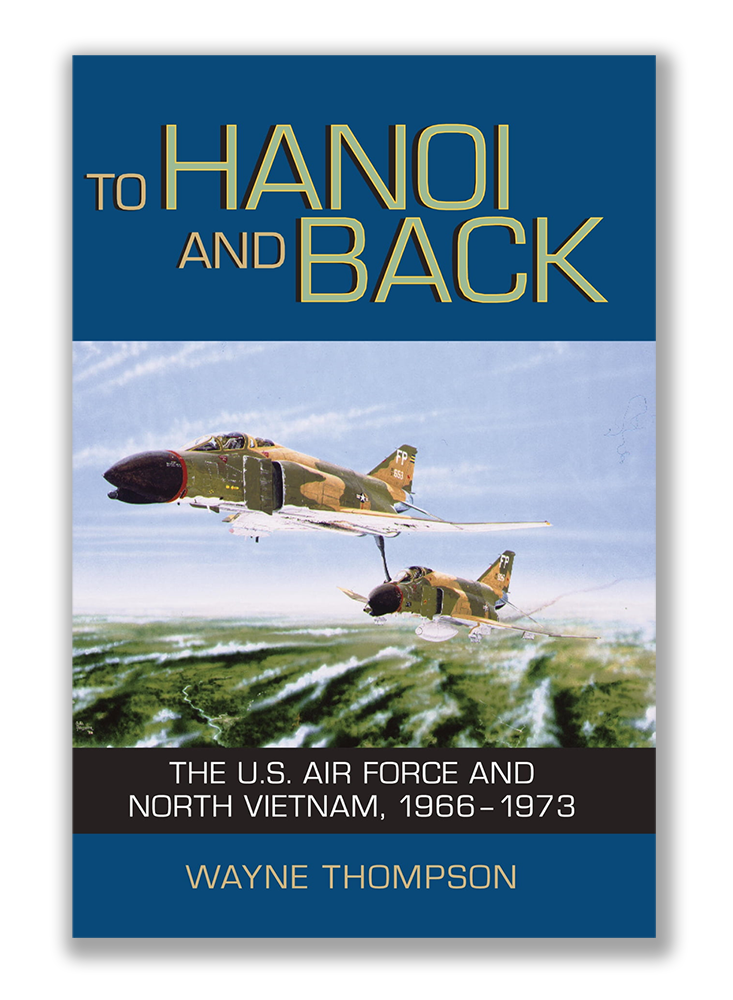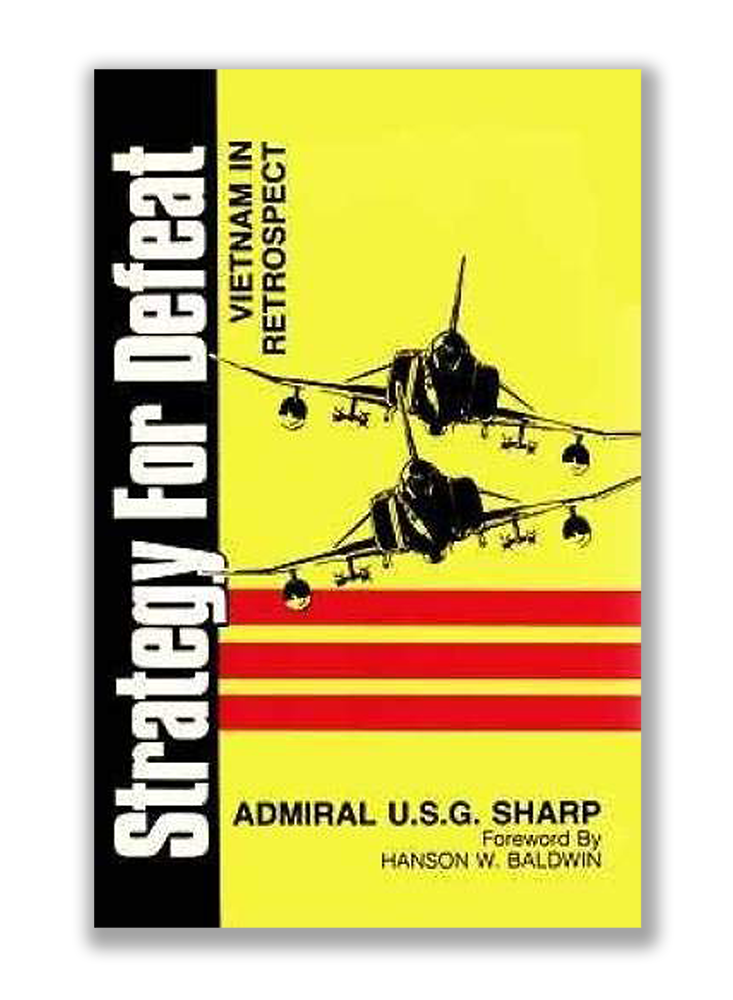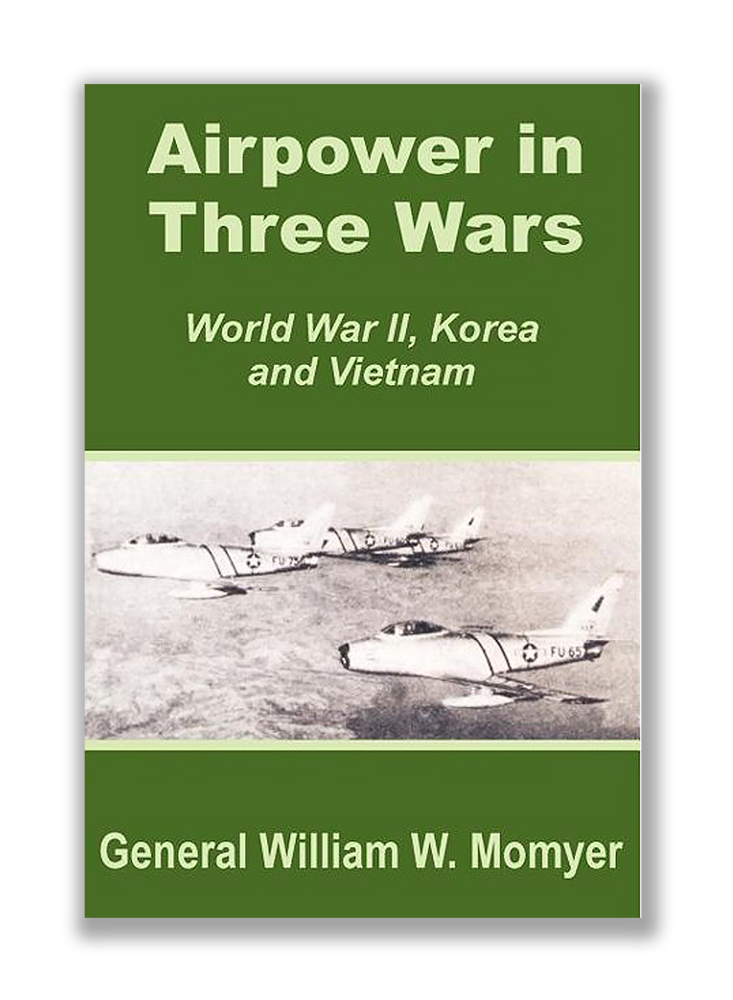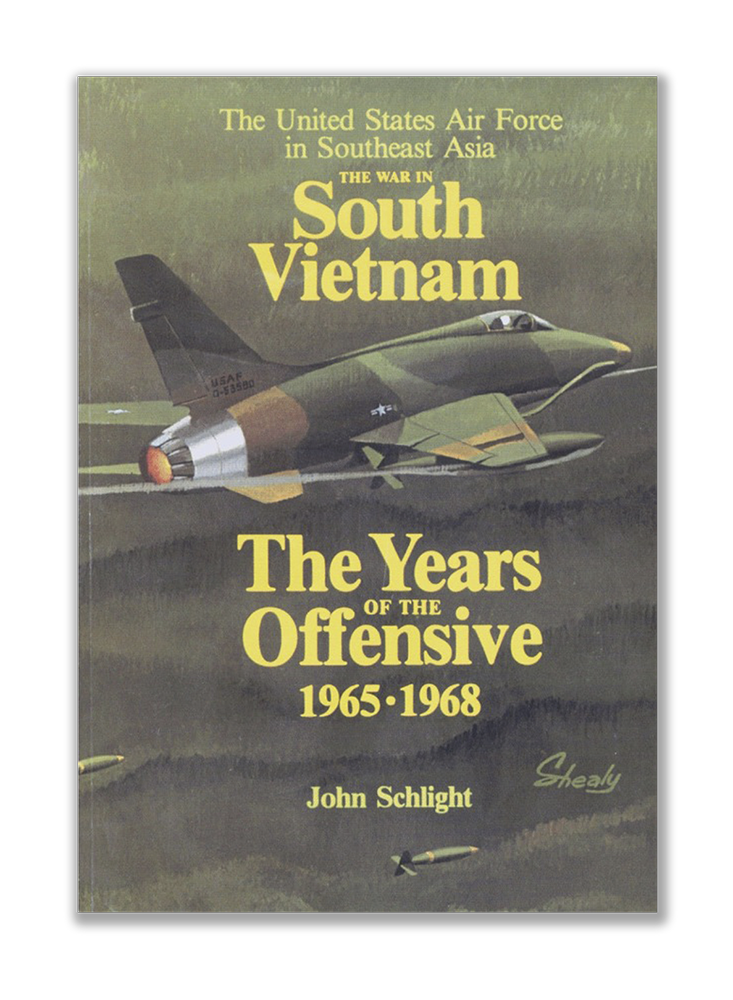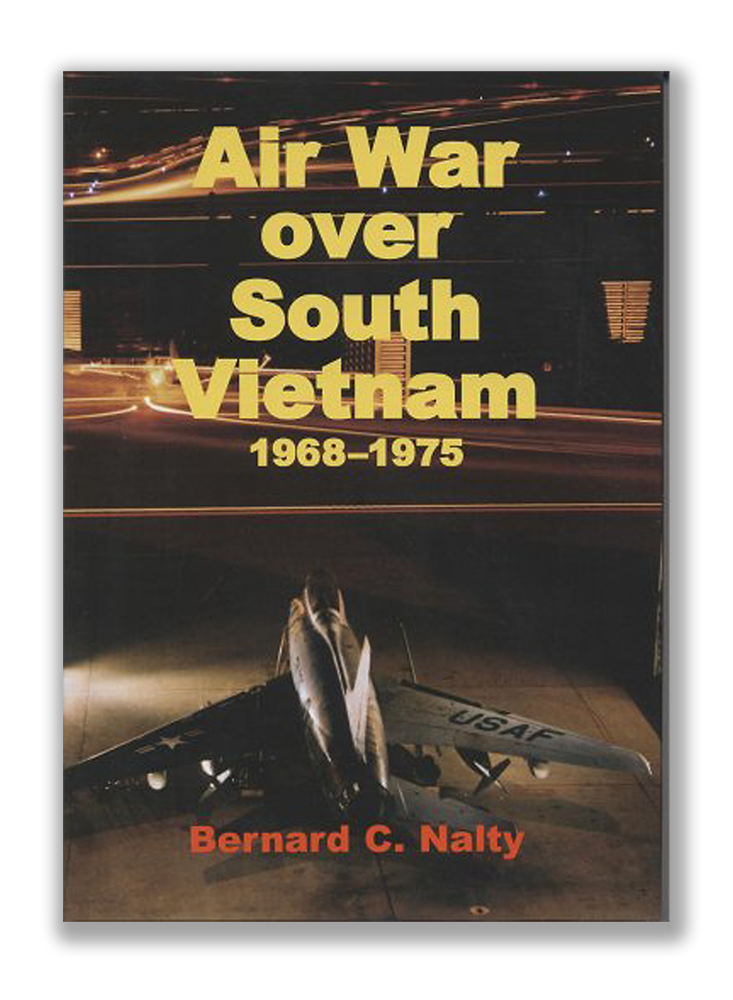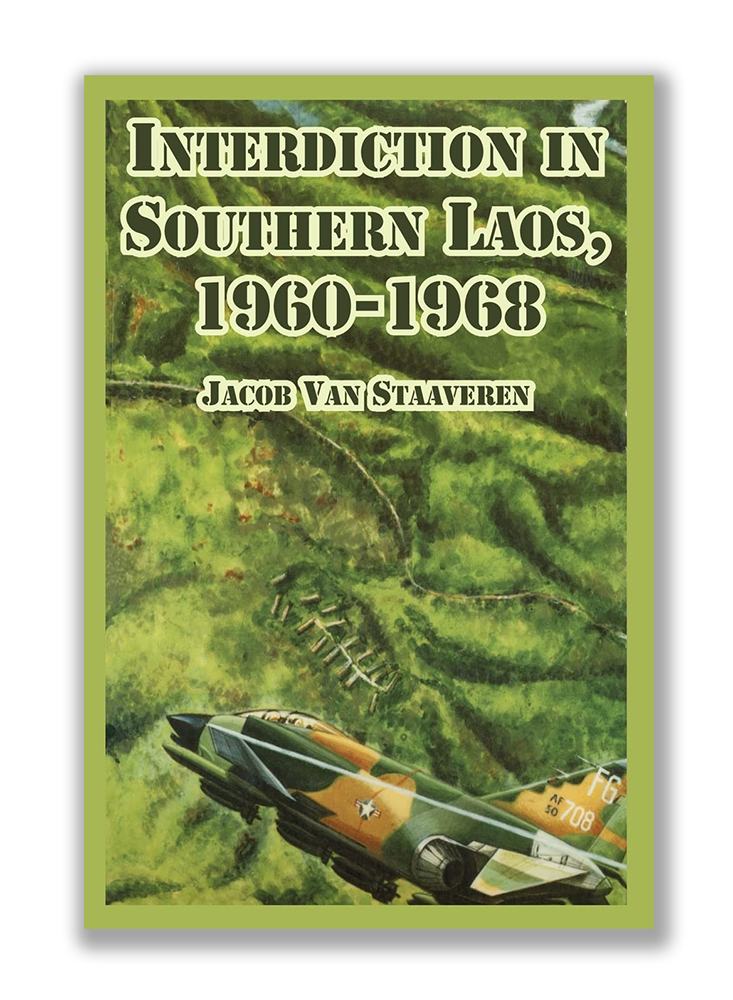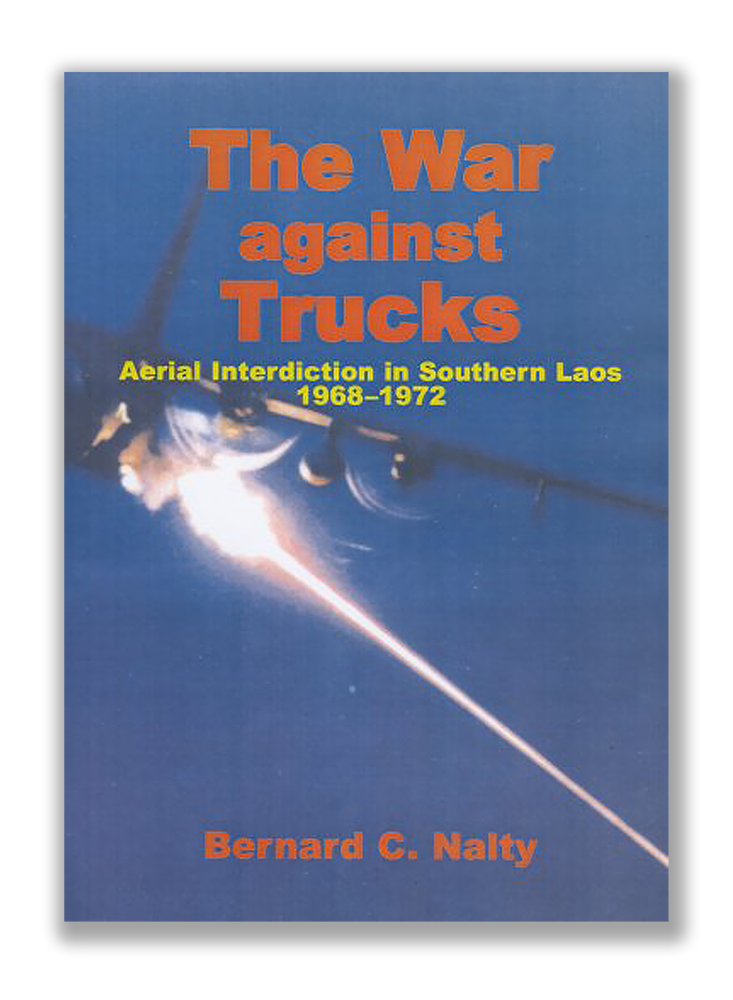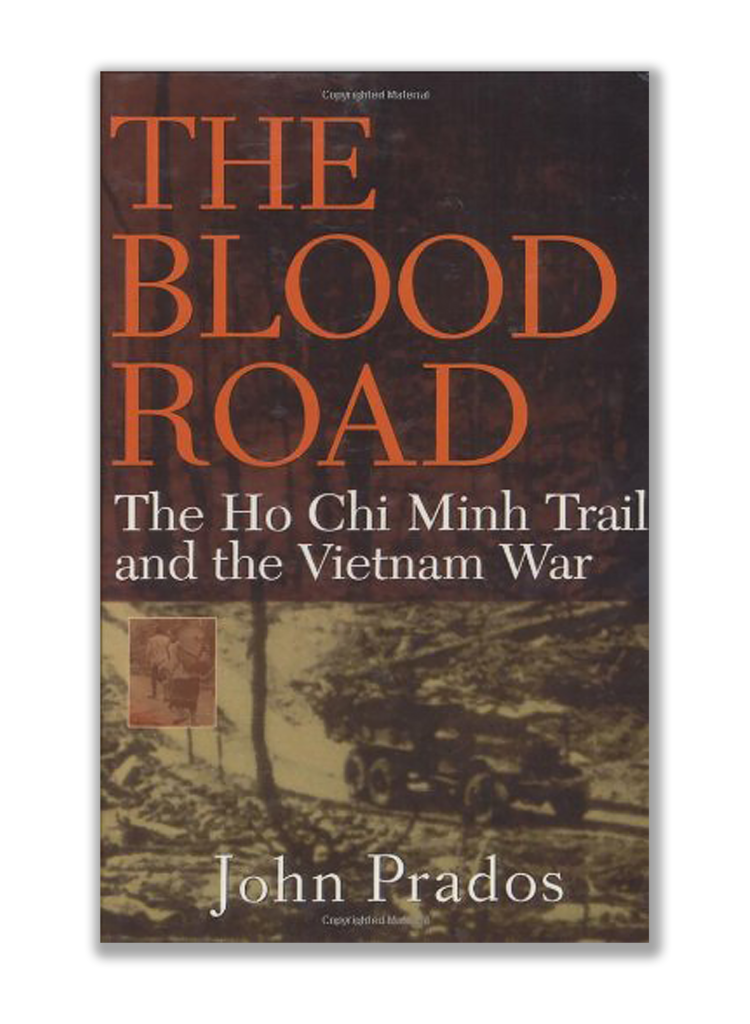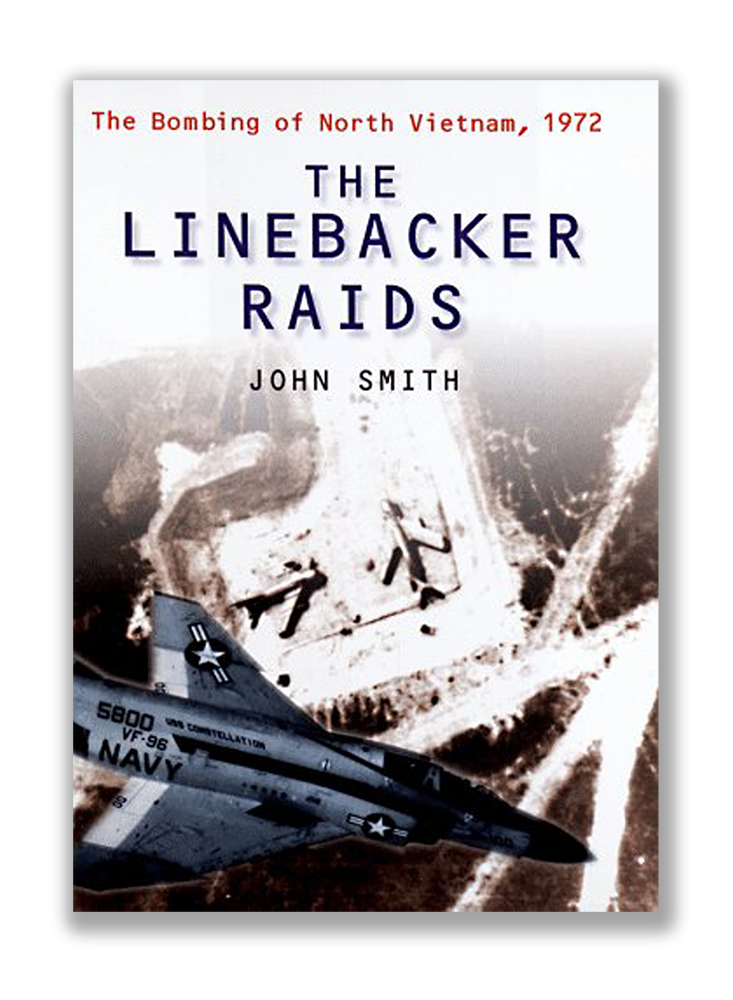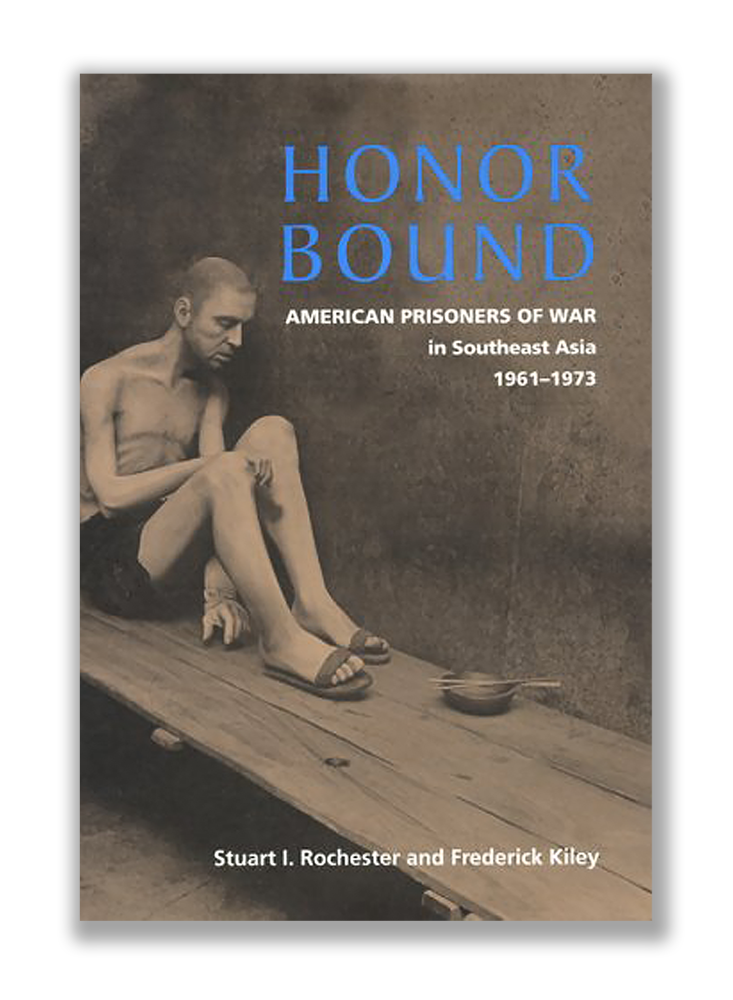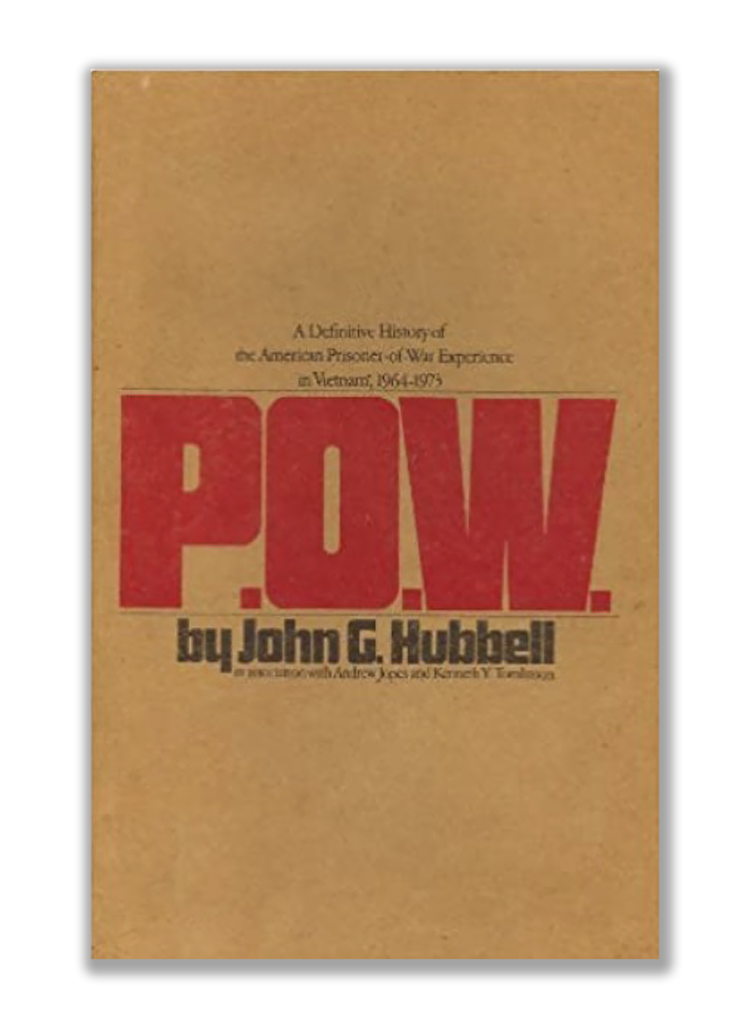The Books Every Airman Should Read to Understand America’s Lost War in Southeast Asia.
Fifty years after its conclusion, the Vietnam War continues to haunt the U.S. military, veterans, policymakers, and families. It was the first war America ever lost and, domestically, it nearly tore the country apart.
By 1963, the U.S. was entangled in the war in South Vietnam. Presidents John Kennedy and Lyndon Johnson were determined to “bear any burden” to protect freedom abroad, and their attempts to do so inexorably deepened America’s commitment there.
In Summons of the Trumpet—U.S.-Vietnam in Perspective (Presidio, 1978), Dave Richard Palmer offers an excellent perspective. Palmer was an Army officer who served in Vietnam, was superintendent of West Point retired as a lieutenant general. Though dated, his insights into how the Army fought are telling. Beginning with the Army’s unique rotation policy in this war: Instead of units rotating in and out, individual Soldiers did. Thus, the U.S. did not have an army in Vietnam for 12 years, but rather 12 armies there for one year each. The President refused to call up the National Guard, fearing it would upset the public. Instead, young men were drafted and sent overseas. Few knew why they were there.
When the Viet Cong—the guerrillas, backed by Hanoi, who fought in the south—escalated the conflict by attacking several U.S. base camps, the U.S. responded by sending in more troops. The force grew from 23,000 in 1964 to over 385,000 by the end of 1966. The war was ferocious, the enemy courageous and creative. U.S. Army doctrine posited a conventional war against a European-style opponent that emphasized mobility and firepower. This, says Palmer, was a mistake. The infantry stopped marching. Instead, it traveled by air, was dropped into landing zones, and then spread out to find the enemy. Once discovered, airstrikes or artillery were called in to eradicate the enemy, after which Soldiers got back into their helicopters and returned to base camp. There was no pursuit of the enemy, no seizing and holding of terrain. Palmer refers to this as “firebase psychosis,” which to him symbolized the disconnect between the tactics used versus those needed.
As the war intensified, so did U.S. casualties. In January 1968, the Viet Cong launched major attacks against urban centers throughout South Vietnam. The U.S. Embassy wall in Saigon was breached. The city of Hue was overrun. U.S. and South Vietnamese casualties were high. Even though the Viet Cong suffered even greater losses, the Tet Offensive, as it became known, was the turning point in the war. While the U.S. claimed Tet was a victory, strategically it proved a disaster. The American public, having been assured the enemy was nearing defeat and there “was light at the end of the tunnel,” felt betrayed; the American will was broken. Riots, demonstrations, and violence erupted in the United States, and President Johnson announced he would not run for reelection. A contentious campaign followed, resulting in a new President and a new ground commander, who instituted a policy of Vietnamization—a gradual withdrawal of American forces while turning the war over to the South Vietnamese.
Within the military, the war was no less controversial. The war’s conduct was dominated by the Army, and to a lesser extent the Navy. Pacific Command (PACOM) led the war effort from its headquarters in Hawaii under the leadership of an Admiral. The fighting in South Vietnam was directed by Military Assistance Command Vietnam (MACV), located in Saigon, and headed by a series of Army generals. Though subordinate to PACOM, MACV largely determined the pace, strategy, and tactics of the war in the south. Of the three Chairman of the Joint Chiefs of Staff who served during the war, two were Army generals and the third was an Admiral. The ambassador to South Vietnam was retired Army Gen. Maxwell Taylor. Airmen were conspicuously absent at that level.
Based on their experiences in World War II, MACV commanders took it as axiomatic that this war would be won on the ground. It was a war of occupation, a war of destruction. The Viet Cong and the North Vietnamese had to be met in decisive battle and annihilated. Army leaders viewed aircraft as an auxiliary to the land forces, and decided how, where, and when airpower would be used.
Vietnam was contentious, even within the Army itself. Although Gen. William C. Westmoreland and others were dedicated to the large, conventional strategy of search-and-destroy missions utilizing massed firepower, there were dissenters.
Andrew F. Krepinevich Jr., an Army officer, wrote The Army and Vietnam (Johns Hopkins, 1986), which criticizes his army and the way it had fought the war. He argues that the Army traditionally fought conventional battles using firepower to substitute for manpower. This was the American way of war. Vietnam and its guerrilla warfare did not fit this model. The Viet Cong determined the pace and location of operations. They attacked when they wished, inflicted damage and death, and then faded away. By the time U.S. firepower was called in, the enemy was usually gone. To Krepinevich, the solution was a counterinsurgency strategy based on highly trained “special forces” who were mobile, smart, and familiar with the countryside and its people. The Army balked at such views, and Gen. Earle Wheeler, the Army Chief of Staff, stated bluntly that “any good Soldier can handle guerrillas.”
Before his death, President Kennedy had favored the Green Berets and pushed for their growth. The Army, Krepinevich says, responded half-heartedly, and kept conventional war advocates in charge, conducting a war of attrition, as Westmoreland ruefully claimed there was no other alternative. Ideas such as the Civil Action Program, an attempt to win over individual villages, protect them, and expand the area of government control, were never pursued with vigor, Krepinevich writes. Instead, 95 percent of Army operations were engaged in search-and-destroy missions, not counterinsurgency. He concludes by stating that the Army “learned little of value” from its Vietnam experience.
In Learning to Forget: U.S. Army Counterinsurgency Doctrine and Practice from Vietnam to Iraq (Stanford Security Services, 2013), David Fitzgerald concurs with this assessment, arguing that, “Defeat in Vietnam led the Army to consciously turn away from its experience there and discard what it had learned about counterinsurgency.” He further argues that this deliberate effort to expunge its unconventional warfare experiences resulted in disaster in Iraq and Afghanistan 40 years later.
But Col. Harry G. Summers Jr. argues precisely the opposite in his On Strategy: A Critical Analysis of the Vietnam War (Presidio, 1982). To Summers, Vietnam was a conventional war, but the American public and leaders in Washington were distracted by the guerrillas, and it became “fashionable” to view the war as an insurgency. Quoting freely from Clausewitz, he says the U.S. should have taken the war to North Vietnam—the real aggressor—via invasion. At the least, the Army should have occupied Laos and Cambodia to drive out the communists and secure the South Vietnamese flank, he wrote. Fears that China might enter the war, as it had in Korea a decade earlier, were based on bluffs, Summers says.
The Air War
Initially, the air components sent to Southeast Asia were of limited quantity and quality. The intent was to assist, not dominate, our South Vietnamese allies, and we trained them in the vintage aircraft provided. Often, American pilots flew along as “observers.” By early 1964, that model began to fade as the Viet Cong became increasingly aggressive. After they attacked several U.S. base camps, killing or wounding dozens of Americans and destroying several aircraft, President Johnson acted. His determination was steeled further when it appeared North Vietnamese patrol boats attacked two U.S. destroyers in the Tonkin Gulf in August 1964.
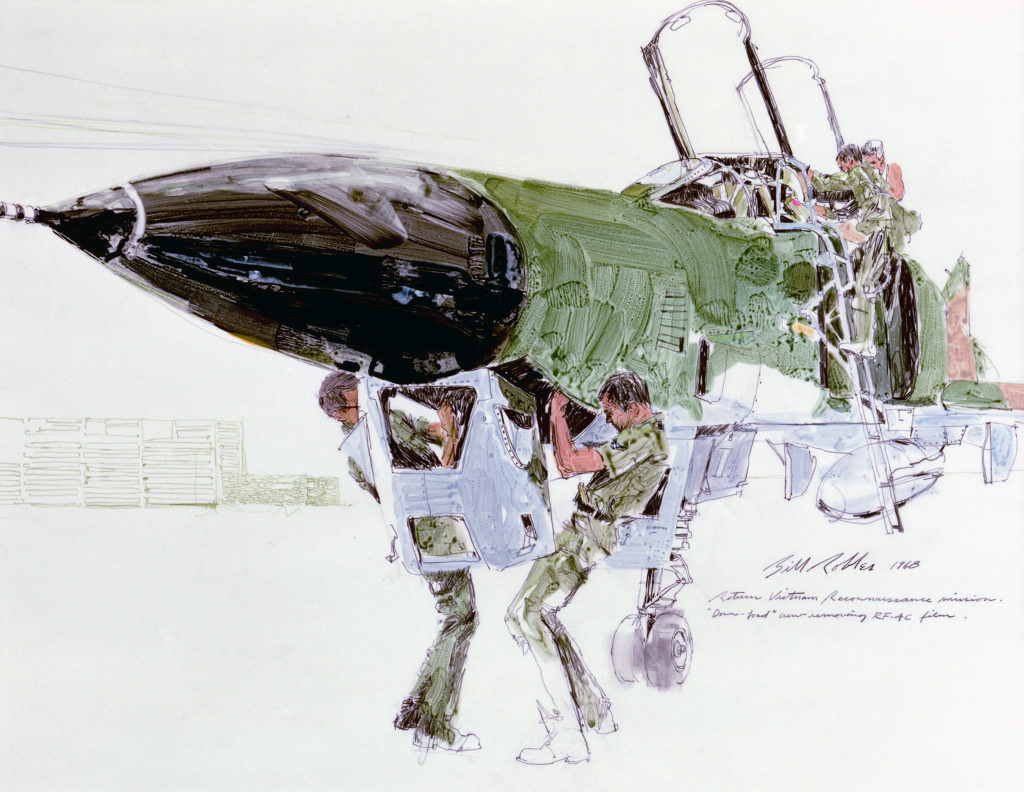
Westmoreland requested and received a large influx of heavy ground forces to launch offensives in the south. At the same time, the subject of punitive airstrikes arose. Air Force Chief of Staff Gen. Curtis E. LeMay—another World War II veteran famed as a bomb commander—argued strongly in favor, pushing to destroy the warmaking capability of North Vietnam with airpower. The Army was opposed, however, reiterating that the war was a ground war, and would be won in the south. Attacks on North Vietnam would be of little use, and indeed, would merely escalate the war, the Army argued. Johnson’s advisers agreed, and Defense Secretary Robert McNamara stated in June 1965 that he did not want even one plane dropping bombs on North Vietnam if that plane could be used advantageously in South Vietnam. This policy and strategic focus would remain fixed until U.S. ground forces were withdrawn from South Vietnam in 1972.
From 1965 to 1968, Operation Rolling Thunder played out, rigidly controlled by Washington. At lunch meetings, the President and his key civilian advisers met in the White House on Tuesdays to decide the targets for the following week. No Airman ever attended those meetings, although after two years, JCS Chairman Gen. Earle Wheeler, an infantryman, was finally allowed entrance.
The decisions made at these meetings were based heavily on political factors: How would the U.S. public react; how would the news media? What were the opinions of our allies? Overshadowing all was fear of China and the Soviet Union. Johnson never forgot that China had intervened in force in Korea in 1950. Although those in uniform downplayed the chances of intervention, Johnson was not convinced; he did not want to widen the war.
This story is told in Jacob Van Staaveren’s Gradual Failure: The Air War over North Vietnam, 1965-1966 (AF History and Museums Program, 2002). Because of the political sensitivity regarding airstrikes both in the U.S. and abroad, Johnson was determined to maintain control. As a result, the number of sorties to be flown, consisting of what types of aircraft, carrying what weapons and against which targets were decisions made in Washington. Prohibited areas were established around the two major cities of Hanoi and Haiphong, and a no-fly buffer zone fronted the Vietnamese/Chinese border. Naturally, most of the lucrative targets in North Vietnam were located inside the prohibited zones.
Because decisions were made in Washington, there were inevitable delays in execution. Thus, if a strike was approved for a certain day but canceled by weather, weeks might pass before Washington would allow the mission to be rescheduled—by which time the target might have disappeared or moved elsewhere.
Rolling Thunder was all about signals. The U.S. was signaling Hanoi that we wanted them to negotiate, so we offered them carrots and sticks. If they agreed to talks and ceased their support of the war in the south, there would be economic aid in their future. If they refused, we would strike them harder. This policy was termed “Gradual Escalation.” We would strike; wait for a Vietnamese response; strike again, only perhaps a bit harder this time; wait some more; and then repeat the cycle, hoping that the North Vietnamese would succumb to our gradually increasing pressure.
Strict rules of engagement (ROE) meant the Air Force would not strike North Vietnamese airfields—Washington saw this as a provocative escalation—so the deadly MiGs could not be attacked while on the ground and vulnerable. When surface-to-air missile (SAM) sites were established in the north in April 1965, they too were declared off-limits—one of Johnson’s advisers opined the missiles were there simply to boost the morale of the North Vietnamese and would not be used. The first U.S. aircraft was downed by a SAM three months later—and 109 more SAM shootdowns would follow by the end of the war. Hampered by restrictions, USAF could not establish air superiority over North Vietnam, driving up the costs of each strike mission. Also off-limits: Ships in the port of Haiphong delivering deadly weapons—along with tons of additional military equipment and precious fuel—many were crewed by Russians, Chinese, or neutrals. Fuel sites and storage facilities were seldom targeted. Targets such as bridges, rail lines, marshaling yards, power plants and steel mills were also off-limits most of the time. When they were struck, it was a decision often made by the President himself. Johnson once commented that Airmen couldn’t hit an outhouse in North Vietnam without his approval.
ROE restrictions rankled the Airmen. They understood that war had to be guided by political leaders, but there seemed little rationale for the constraints placed on them. This must be understood in context: Our military today has spent their careers guided by strict and detailed ROE. They are accustomed to it. That was not the case in Vietnam where such restrictions were viewed as new, nonsensical, and dangerous.
The story is continued in Wayne Thompson’s, To Hanoi and Back: The USAF and North Vietnam, 1966-1973 (AF History and Museums Program, 1998). He describes the arguments between American military and civilian leaders regarding the goals of Rolling Thunder. Was it to defeat the north, or merely to get them to negotiate? Was it to destroy their warmaking capability, or just to stop the flow of supplies to the south? Unfortunately, different objectives demanded different types of air campaigns, and these would require different aircraft using different weapons against different targets.
Thompson’s account illustrates the adage that excellent tactics cannot overcome a flawed strategy. No matter how ingenious, professional, and courageous were our Airmen, the odds were stacked against them. New weapons, new tactics, new aircraft, and new ideas were tried endlessly. The life of the aircrews depended on their adaptability, but of course, the enemy was evolving as well, introducing new weapons and technology from China and the Soviet Union. The result was a stalemate. Just as the ground war in the south was a war of attrition, so too was the air war over North Vietnam.
Little by little, in dribs and drabs, key targets were approved, yet still not attacked as hard as they could have been, nor in a timely manner. Thompson notes that “President Johnson repeatedly assured the communist rulers of North Vietnam that his forces would not hurt them, and he clearly meant it. Government buildings in downtown Hanoi were never targeted.” Similarly, the President announced periodic bombing halts intended to bring enemy leaders to their senses and negotiate seriously. Instead, that time was used to move men and supplies and build more formidable defenses for when the airstrikes resumed.
Rolling Thunder shuddered on inconclusively until November 1968, when President Johnson announced another bombing halt, his 16th. This one would last for four years. During Rolling Thunder, the USAF flew nearly 154,000 strike sorties over the north, as well as 129,000 support sorties. It had dropped around 500,000 tons of bombs. But the price had been high: The Air Force lost 638 aircraft, including half of the F-105 fleet. Some 413 Airmen were killed, and 333 more became prisoners of war.
Lost in Washington, D.C.
Two memoirs by leading air commanders during the war are must-reads. The first is Adm. U.S. Grant Sharp’s Strategy for Defeat: Vietnam in Retrospect (Presidio, 1978). Sharp, who commanded PACOM during Rolling Thunder, states his conclusion early on: “We were never allowed to move decisively with our tremendous air and naval power.”
To Sharp, the blame was clear: “The real tragedy of Vietnam is that this war was not won by the other side, by Hanoi or Moscow or Peiping. It was lost in Washington, D.C.” Like LeMay, Sharp believed a robust air campaign against the north, carried out in 1965, would have been decisive in ending the war. Instead, politics shaped an ineffective air campaign: “We could have flown 10 times as many sorties as were permitted,” he laments. Throughout his memoir, Sharp argues that civilian leaders in Washington made crucial decisions—down to the tactical level—that cost American lives. What he does not acknowledge, however, is that those orders were relayed to him from the JCS, and he in turn passed them on to his forces. There was plenty of blame to go around in this war, from both the civilian and military sides.
Another memoir is Gen. William W. Momyer’s Air Power in Three Wars (GPO, 1978). As a full general commanding 7th Air Force during the war, Momyer’s in-depth look at air operations and how they were conducted is insightful. Like Sharp, he was bitter over the constraints and restrictions placed on him. More importantly, he looked closely at the command and control (C2) arrangements, which were a mess.
North Vietnam was divided into seven geographic “route packages.” Some were assigned to the Navy and the others to the Air Force. Navy strikes were planned and conducted through naval channels, while Air Force missions were run through Pacific Air Forces (PACAF) in Hawaii. No one was in overall operational control of the air war; it seemed that competition between the services often took precedence over a joint effort.
The Air Force had two tactical air forces fighting in Vietnam, 7th Air Force headquartered in Saigon and 13th Air Force in the Philippines. Aircraft based in South Vietnam were controlled by 7th Air Force and were usually not allowed to strike targets in Laos. Aircraft stationed in Thailand were controlled by 13th Air Force, but were generally not permitted to hit targets in South Vietnam. When either air force went to North Vietnam, they received their targets from PACAF in Hawaii. When targets were struck in South Vietnam, they were chosen by the MACV staff in Saigon. There were two different air command posts in Saigon—one termed “in-country” for strikes in South Vietnam, and the other called “out-country” for attacks against the North or in Laos. Thus, from one day to the next aircraft could fly against targets in three different countries, be controlled by two different agencies, and receive targets from two other agencies. It was confusing.
Procedurally, targets in the north were decided in Washington and passed on to Hawaii to be doled out to Air Force and Navy units. In the south, MACV would pass targets to the air components—the Air Force, Navy, Army, and Marines. (The South Vietnamese Air Force did not take orders from MACV). There was little or no coordination among these five air arms. The MACV staff was dominated by Soldiers, and as a result, Airmen had little input into which targets were struck nor were they told why these targets were selected or what their destruction was meant to achieve.
There were attempts to bridge these organizational gaps: Momyer was dual-hatted as commander of 7th Air Force plus MACV’s deputy for air, and because 13th Air Force also controlled aircraft in the theater, a single individual was named the vice commander of both air forces to help smooth cooperation. These steps were inadequate. Note too that the 8th Air Force was also involved, bringing B-52s, KC-135s, U-2s, and SR-71s belonging to Strategic Air Command (SAC). Because these assets needed to be available for the nuclear deterrence mission, SAC refused to relinquish control, so they were commanded from Offutt Air Force Base in Nebraska, through an 8th Air Force forward headquarters based on Guam. In addition, strategic airlifters like C-141s and C-5s belonged to Military Airlift Command, headquartered at Scott AFB in Illinois. Seen as global assets, they were not controlled by the theater commanders either.
These C2 issues were never resolved. The position of a Joint Force Air Component Commander, now enshrined in U.S. joint doctrine, would not exist until the mid-1980s.
The result is a depressing tale of mismanagement, disorganization, and both interservice and intraservice rivalry. Momyer’s conclusion is accurate though depressing: “Airpower can win battles, or it can win wars. All commanders since Pyrrhus have been tempted at one time or another to confuse the two, but few distinctions are more important.” Momyer was relegated to being a high-ranking tactician—strategic decisions were made elsewhere.
Air War in the South
The air war in the south was more intensive than Rolling Thunder, even if the latter received most of the glamour and press. Two good books on the subject are John Schlight, The Years of the Offensive, 1965-1968 and Bernard C. Nalty, Air War Over South Vietnam, 1968-1975 (published by the AF History Program, 1988 and 2000, respectively).
From a slow beginning in 1962, U.S. forces began to build, and by the end of 1968 there were over 56,000 Airmen and nearly 1,100 aircraft stationed in South Vietnam, Guam, Okinawa, and Thailand. Unlike in the north, the U.S. enjoyed air superiority in the south; Hanoi’s aircraft never crossed the demilitarized zone (DMZ). Ground fire was another matter. As in most wars, ground fire accounted for most of the aircraft downed. The Air Force lost more than 1,500 aircraft in the South, at the cost of 2,100 men’s lives.
U.S. missions were flown by F-100s, A-1s, F-4s, B-57s, gunships of several types, A-7s, F-111s, and others. All told, the Air Force flew 3.9 million combat sorties in support of the Army and Marines in South Vietnam, of which over 630,000 were attack sorties. These strike missions included more than 67,000 flown by B-52s based in Guam and Thailand. They dropped an incredible 8 million tons of bombs—three times more than had been dropped in all of World War II. The Soldiers who directed these airstrikes saw firepower as the decisive and unique feature of U.S. military capability. Casualties were always paramount, so firepower was to be the great equalizer that saved American lives.
An example of this notion was the Marine base at Khe Sanh that was surrounded by the North Vietnamese during the Tet Offensive. U.S. leaders feared for its survival—many remembered the siege of the French base at Dien Bien Phu, which the North Vietnamese had surrounded in 1954. Its fall ended French military operations in its former colony. President Johnson and other leaders were loath to allow that to happen at Khe Sanh. General Westmoreland demanded and received increased airpower, especially B-52s, to save the base camp. Over the next two months, the heavy bombers flew more than 2,500 sorties and dropped nearly 60,000 tons of bombs—more than all other U.S. aircraft combined. It is believed that 15,000 enemy died at Khe Sanh, and Westmoreland attributed the base’s survival to the B-52s.
The war also bled over into Laos and Cambodia. Rather than infiltrating men and supplies across the DMZ, the North Vietnamese established a road system through its neighbors that terminated in various locations in South Vietnam. This huge and complex system, termed the Ho Chi Minh Trail, became a constant target of American airpower. These operations are covered in Jacob Van Staaveren’s Interdiction in Southern Laos, 1960-1968, and Bernard C. Nalty‘s The War Against Trucks: Aerial Interdiction in Southern Laos, 1968-1972 (published by the AF History and Museums Program, 1993 and 2005, respectively).
Reconnaissance missions over Laos began in 1963, and over the next decade thousands of U.S. aircraft would patrol the Trail looking for targets. This interdiction effort was termed Barrell Roll for missions over northern Laos and Steel Tiger—later named Commando Hunt—for operations over southern Laos. These missions were sensitive—the Laotian government sought to maintain the semblance of neutrality. Nonetheless, an early lesson learned was that to stop the flow of supplies, aircraft needed to be over the Trail both day and night and in all weather. This was difficult to achieve. By the end of 1967 the Air Force had flown over 183,000 sorties in Laos and allegedly destroyed over 8,000 targets, mostly structures and vehicles. This was achieved at the cost of 122 aircraft. By the end of the war, it was claimed that over 50,000 North Vietnamese trucks had been destroyed during the decade of interdiction efforts along the Trail, but few believed these figures.
To understand the war from the other side, John Prados offers The Blood Road: The Ho Chi Minh Trail and the Vietnam War (NY: John Wiley, 1999). The Vietnamese were every bit as determined, clever, and innovative as the Americans—maybe more so. Hanoi estimated a mere 20 to 30 tons of supplies per day would sustain the insurgency in the South. This was easily maintained, and soon 10 times that much was on the move. Indeed, by the end, the Trail—which consisted of 12,000 miles of roads—supplied nearly 500 tons per day, enough to supply nearly 12 regular divisions plus the Viet Cong. Although our aircraft came every day, 100,000 Vietnamese and Chinese workers were there every night to make repairs—rebuilding bridges or trails, clearing damaged vehicles out of the way or repairing them, and ensuring the supplies kept moving. It came at a price. Prados does not give an overall figure of the number of Vietnamese who died but notes tellingly that there are 72 military cemeteries along the Trail, holding the remains of those who labored there.
It was one of the many tragedies of the war in Southeast Asia that the clandestine wars being carried on in Laos and Cambodia were officially denied but were an open secret. The lies, when they eventually became known, only further undermined the credibility of the government in the eyes of the American people.
End Game
In spring 1972 the North Vietnamese launched a conventional invasion across the DMZ. Termed the “Easter Offensive,” it occurred after the withdrawal of American ground forces. Sending them back in was not an option for President Richard Nixon; instead, he sent airpower.
The story of this air response, termed Linebacker I and Linebacker II, is told in Wayne Thompson’s To Hanoi and Back and by John T. Smith in The Linebacker Raids: The Bombing of North Vietnam, 1972 (Arms and Armour, 1998). The Vietnamese assault began on March 30 with 100,000 regular troops supported by 400 tanks. Eventually, 14 North Vietnamese divisions were involved. Nixon reacted quickly, even mining Haiphong harbor, an idea that had been suggested for years but never implemented. Aircraft not only blunted the invasion, but also went far north again for the first time since Rolling Thunder. This time, a remarkable new weapon was available: the laser-guided bomb. Precision-guided munitions had been tested in World War II, but it was in Vietnam that they were first used extensively. An example of their effect was Hanoi’s Than Hoa bridge. During Rolling Thunder, hundreds of sorties had been flown against the bridge resulting in 11 aircraft shot down but no real damage inflicted. During Linebacker, a flight of F-4s carrying laser bombs dropped the bridge while suffering no losses. Precision-guided munitions would revolutionize war.
Secretary of State Henry Kissinger was meeting with North Vietnamese representatives in Paris during Linebacker, and it appeared progress was finally being made in peace negotiations. After weeks of bitter haggling, an agreement was reached: the North Vietnamese would stop their attacks, the Americans would withdraw, and the hundreds of POWs in Hanoi’s prisons would be released. However, President Thieu of South Vietnam objected to these terms and demanded changes. Hanoi used this intransigence as a chance to renege on its own agreements.
The pact was not signed. Nixon was furious. He then launched Linebacker II—intensive strikes against North Vietnamese targets that had hitherto been off-limits and employed for the first time B-52s. Sensitive to endless complaints regarding restrictions placed on the military, he lifted most such constraints, noting: “The bastards have never been bombed the way they’re going to be bombed this time.”
Sometimes referred to as “The Christmas Bombing,” because the heaviest raids took place in late December, the B-52s plus dozens of other strike aircraft went north to pummel targets in Hanoi and Haiphong. The North Vietnamese returned to Paris on Dec. 26. The heavy bombing did not change the terms of the original agreement, but this time the North Vietnamese signed.
The B-52s flew 729 missions north dropping 15,000 tons of bombs on 34 separate targets. They lost 15 aircraft carrying 92 crew members. Of these, 26 were rescued, 34 became prisoners of war POWs, and 28 are still listed as missing.
Prisoners of War
One of the most tragic stories of the Vietnam War was, paradoxically, also one of the most uplifting. It involved the plight of our POWs held in North Vietnam. The first Airman shot down was Navy Lt. Everett Alvarez, whose A-4 went down on Aug. 5, 1964. At first, his captors were not sure what to do with him, and he was largely left alone in a rat-infested cell. That would soon change as dozens of Air Force and Navy crew members would join him in prison.
Beginning in October 1965, the first Airman, Rodney Knutson, was brutally tortured. Others soon suffered the same fate, repeatedly. The captives claimed they were POWs, protected by the Geneva Conventions, which the North Vietnamese had signed. The jailers, however, called them war criminals and denied they had any rights. Initially, the prisoners gave only the required name, rank, and serial number, but torture followed and more was beaten out of them. John G. Hubbell in P.O.W. (NY: Thomas Crowell, 1976) relates all of this in shattering detail. A similarly informative, if depressing account, is by Stuart I. Rochester and Frederick Kiley, Honor Bound (Office of the Secretary of Defense, 1998). The description of the torture these
men suffered is stomach-turning, and many would die while others endured lifelong injuries. At first the captors wanted personal information—where they were from, families, etc. Then it was details on their planes, base/aircraft carrier, commanders, tactics. Finally, the torture led to propaganda. The POWs were to read statements before a camera or sign statements admitting they were war criminals who deserved their punishment. For over seven years the POWs fought their captors in the only way they could: they delayed, told lies, and spread disinformation. Ultimately, all were broken.
There was an upside related by Hubbell that is moving. The POWs maintained unity as much as was possible. They developed sophisticated methods of communicating by tap code, hand signals, and notes on scraps of paper left in toilets or buckets. They constantly tried to keep up the spirits of their comrades, urging them to “forgive themselves” after they had been broken. The goal was survival. Hubbell tells the story of one man, Lt. Cmdr. Richard Stratton, but his experiences were replicated by scores of his fellow prisoners. “Stratton was choked, kicked, and beaten until his face and head were bloody and his eardrums were ruptured. Twice he was tortured in ropes and hell cuffs and burned cigarettes, and there was a painful although incomplete effort to pull out his thumbnails. He was left with no choice but to admit that he had bombed Hanoi.”
There were efforts to trick the Vietnamese, by listing squadron mates as Ben Casey or Clark Kent; for radio broadcasts they would deliberately mispronounce Ho Chi Minh as Horseshit Men; or when on video they would use their hands or eye blinks to send Morse code messages. It does not sound like much, but it did wonders for the POWs—it made them feel they were still fighting the enemy.
Over the years the treatment of the POWs waxed and waned depending on the mood of the prison guards or the political situation. When the Americans raided the POW camp at Son Tay on Nov. 21, 1970, only to find it empty, the Vietnamese hurriedly moved all prisoners into one camp, the Hanoi Hilton, to avoid the risk of another prison raid.
The Paris Peace Accords were signed on Jan. 27, 1973. One of its key provisions was the release of the POWs. Food immediately improved and became plentiful: the Vietnamese did not want gaunt skeletons returning to the U.S.
Eight Americans who had collaborated with the enemy faced no punishment from the military upon their return. Although some of their fellow ex-POWs filed charges against them, the cases were dismissed or the accused acquitted in every instance. It was time to heal. The Department of Defense states that 684 POWs returned from Southeast Asia—most from North Vietnam (470) and South Vietnam (167), but also from Cambodia (26), Laos (19), and even China (2). Another 1,587 remain listed today as Missing in Action; the search for remains continues.
There are few happy endings to any histories or memoirs from the Vietnam War. Those who served in Southeast Asia often returned home bitter over their experiences and yet also rejected by their fellow Americans. It has taken decades for the rancor and anger to subside. That story is still being written.
Phillip Meilinger is a retired Air Force colonel and historian. The author of 10 books on Airmen and Airpower, and has written more than 100 articles for this magazine and others.
